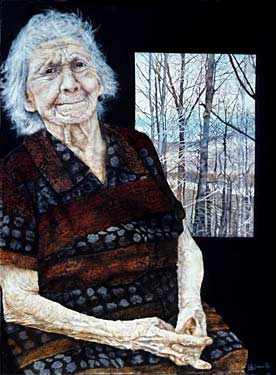|
|
The Challenge of Growing Old
By Zack Gross, The Brandon Sun
Canada
August 2, 2005

Having just recently become a grandparent and having now had the experience of ordering off the seniors' page on a restaurant menu, I was curious to see where people like me fit into the world's economic and social scheme.
The answer is: Not too high and not too well. In Canada, to some extent, social programs help seniors with financial and personal issues such as health care and pharmaceutical guarantees, rent controls, transportation and pensions. However, particularly in poorer parts of the world - and in some wealthier countries that practice more laissez-faire economics - older people suffer hardship at every level.
United Nations statistics tell us that more than 100 million older men and women in developing countries live on less than $1 US per day. About 400 million seniors, 70 per cent of the world's oldest people, live in poor countries, with a majority of them widows. This figure is expected to double by 2025 as life expectancies rise.
Many of these people are forced to continue their paid (underpaid, underemployed) labour well into their 70s to provide for their families. Millions in Africa alone are raising their grandchildren due to the death of the middle generation from HIV/AIDS and other diseases, as well as from war.
These grandparents had expected their children to support them in their old age, but now find themselves having to continue working while each grandchild they support in food, clothing and education literally eats away at their meagre income.
In my own visits to East Africa, we encountered multi-generational families where the best potential income earners had died and where grandparents became parents again or uncles and aunts took on the responsibility for nieces and nephews.
Millions of elderly people also live around the world as refugees or internally displaced people due to civil strife and have seen their own adult children butchered in conflict.
Life expectancy in Canada and the developed world has grown to the point where men live into their mid-to-late 70s and women live into their early 80s, on average.
Life expectancy in poorer countries has also improved, but not to the same extent. Average life spans often still hover in Africa in the 50s and 60s and people are often infirm in later years from a lifetime of harsh conditions.
In Canada, seniors tend to move to urban areas where they can be closer to medical services. Nearly three-quarters of Canadian seniors have done so, whereas less than half that percentage have in developing countries. There, the majority of seniors live in rural areas remote from care or, if they do move to the city, often find themselves in large slums.
In Canada, seniors continue to make up more and more of our total population. In 1921, five percent of Canadians were 65 or over. By 1971, that percentage had risen to eight, by 1981 to ten and by 1998 to twelve percent.
This is partly due to the aging of our huge baby boom generation. It is also because, thanks to modern science, we have broken through many life expectancy barriers that poorer countries are still dealing with.
Our technology has largely eliminated backbreaking labour in such areas as farming, mining and construction.
Better working regulations and conditions have meant fewer accidents. Wealthier countries have not been involved in war on the scale of previous eras. And modern medicine has cut into the effects of infectious disease.
However, while our social service and health-care systems eat up large portions of federal and provincial budgets, they are not always effective at dealing with the needs of seniors.
Living longer is not enough. People over 65 years of age still must deal with a variety of chronic conditions, such as arthritis, high blood pressure and diabetes.
They also face decreased incomes and isolation. Older women are twice as likely as their male counterparts to live in poverty. And unattached seniors are far more likely to be poor, again particularly in the case of women.
As the number of seniors rises, so does the number of those living in poverty and living alone. Government budget cuts over the past decade have impacted on the welfare of these groups.
The result of these concerns, both locally and globally, has included the creation of private aid organizations which raise funds to help seniors both in the Third World and here at home.
One is Help the Aged, which has provided many of the statistics on their web site for this article. Growing numbers of domestic and international agencies have included seniors in their programs, although the scale of the problems is often quite different.
In countries where younger people face poverty, disease and a lack of education, older people face proportionately the same challenges.
Countries that can or choose to offer a standard of these programs and services as a human right to their younger generation will also provide a better standard of living to their aged. We are all aging. We should all be vigilant.
|
|



